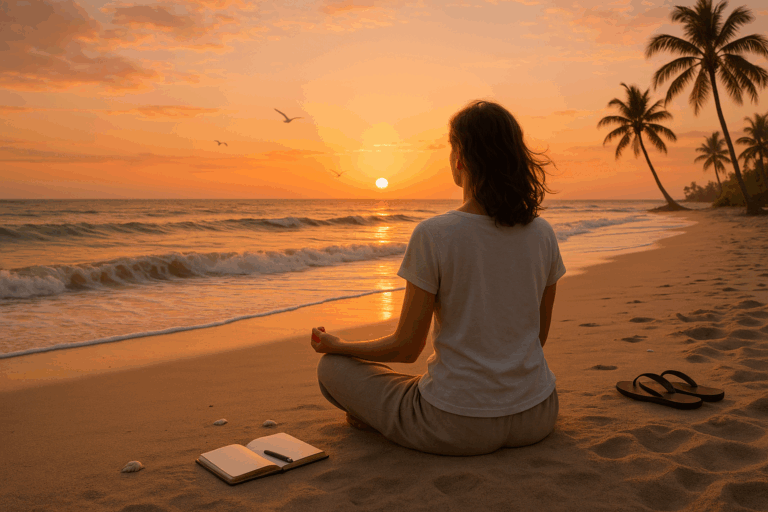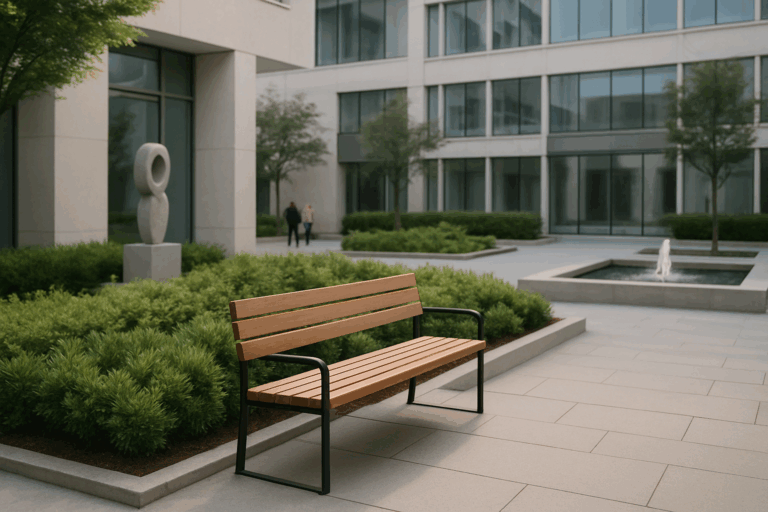They represent a thoughtful approach to travel, a trend that is gaining traction among those who wish to experience their journeys on a deeper level. But what does slow travel actually mean? And how can one master this art?
With slow travel, the journey itself takes center stage. Rather than rushing to check off a list of tourist attractions, slow travelers take their time to soak up the culture, cuisine, history, and local life of the places they visit. They value quality over quantity and immersion over observation. It’s a matter of trading in the all-too-familiar rush of ‘going somewhere fast’ for the richness of ‘going nowhere slowly’.
Unveiling the Secret of Slow Travel
Slow travel is not merely a style of vacationing, but a mindset. It is rooted in the desire to form deeper connections and gain a greater understanding of the destination. It promotes the idea of sustainability, local engagement, and the cultural exchange that can occur when we take the time to truly experience a location, rather than rushing through it. The secret of slow travel lies not in the distance covered or the number of places seen, but in the depth and quality of the experiences.
Mastering the Art of Slow Travel
Mastering slow travel isn’t about adhering to a strict set of rules or guidelines. It’s about redefining the way we travel and the way we perceive the concept of time and pace. This involves planning less, being flexible, and opening oneself up to unexpected experiences. It means taking the time to enjoy the small moments, the subtle nuances, and the beauty that often lies hidden beneath the surface of our fast-paced lives.
The Journey of a Lifetime
Slow travel invites us to embark on the journey of a lifetime, one that leaves lasting impressions and memories that go beyond mere sightseeing. It enables us to truly connect with the people, the culture, and the environment we encounter, providing a more enriching and fulfilling travel experience.
With slow travel, we are encouraged to slow down, to be present, and to savour the moment. We are challenged to step out of our comfort zone and immerse ourselves in new experiences, cultures, and perspectives. This is the journey of a lifetime – not measured by miles traveled or landmarks visited, but by the depth of experiences and connections made.
This blog post will delve deeper into the secret of slow travel, providing you with an understanding of its core principles, benefits, and how you can integrate this philosophy into your own travels. We will discuss the best practices for mastering the art of slow travel, with a focus on key strategies, tips, and guidelines. Prepare to immerse yourself in the journey of a lifetime, discovering the profound and rewarding aspects of going nowhere fast.
Embarking on the Journey of Slow Travel
Imagine a way of traveling where the journey becomes as significant as the destination. A form of exploration that allows you to savor the experience, embrace the local culture, and make meaningful connections with people and places. This is the essence of slow travel, a trend that is transforming the travel industry. But what is slow travel, and how can you master this art of going nowhere fast? Let’s dive deeper into this topic.
Slow travel is a mindset that encourages travelers to take their time, immerse themselves in local communities, and enjoy the journey rather than rushing from one tourist attraction to another. It’s about experiencing a destination on a deeper level, emphasizing quality over quantity. The concept is similar to the slow food movement, which advocates for locally grown produce and traditional cooking methods to preserve cultural and culinary heritage.
In this article, we will explore the philosophy of slow travel, the benefits of this approach, and how you can master this art. This comprehensive guide is intended to provide valuable insights for those who want to immerse themselves in the journey of a lifetime. We will also feature a video from the YouTube channel “Slow Travel Stories” to illustrate real-life examples of slow travel.
Understanding the Philosophy of Slow Travel
Slow travel goes beyond the typical travel style of ticking off bucket list items. It’s a philosophical approach to travel, seeking to engage with environments and communities in a more meaningful, respectful, and sustainable way. It encourages travelers to be present and mindful of their surroundings, to appreciate the beauty in the small details, and to cultivate a sense of curiosity and wonder about the world.
By slowing down, we have the opportunity to connect with the local culture, engage with the community, learn the language, and develop a deeper understanding of the place we’re visiting. It’s about immersing ourselves in the experience, absorbing the local vibe, and creating unforgettable memories. This way of traveling can also have a positive impact on the environment, as it often involves choosing eco-friendly transport options, supporting local businesses, and minimizing waste.
For a more visual explanation of this philosophy, check out the video “The Art of Slow Travel: A Guide to Slowing Down and Enjoying the Journey” by Slow Travel Stories on YouTube. This video beautifully encapsulates the essence of slow travel and provides valuable tips on how to embrace this travel style.
Benefits of Slow Travel
Now that we’ve delved into the philosophy of slow travel, let’s explore some of the benefits of adopting this approach. The perks of slow travel are numerous and include reduced stress, greater immersion in local cultures, more sustainable travel practices, and potential cost savings. Here, we’ll break down each of these benefits in more detail.
One of the key advantages of slow travel is reduced stress. When we’re constantly rushing from one place to another, trying to see everything in a limited amount of time, travel can become stressful and exhausting. In contrast, slow travel encourages us to take our time, to relax and enjoy the experience, leading to a more rejuvenating and rewarding journey.
Secondly, slow travel allows for greater immersion in local cultures. By spending more time in a place, we can get to know the locals, learn the language, try traditional food, and participate in local customs and traditions. This deeper cultural immersion enriches the travel experience and leads to more meaningful connections with people and places.
To illustrate the benefits of slow travel, let’s refer to the table below:
| Benefits | Description |
|---|---|
| Reduced stress | By not rushing from one place to another, slow travel allows for a more relaxing and rejuvenating journey. |
| Greater cultural immersion | Spending more time in one place allows for deeper engagement with the local culture, food, language, and people. |
| Sustainable travel practices | Slow travel often involves choosing eco-friendly transport options, supporting local businesses, and minimizing waste, contributing to sustainable tourism. |
| Potential cost savings | By staying longer in one place and avoiding tourist traps, travelers can often save money in the long run. |
Mastering the Art of Slow Travel
Mastering the art of slow travel requires a shift in mindset. It’s about letting go of the need to see and do everything, and instead focusing on the quality of your experiences. Here are some practical tips on how to embrace slow travel:
- Plan less: Avoid over-planning your trip. Leave room for spontaneity and exploration.
- Stay longer: Instead of hopping from one city to another, choose one place and stay there for a longer period. This allows you to truly get to know the place.
- Live like a local: Try to integrate into the local community. Visit local markets, eat local food, use public transportation, and learn the local language.
- Be present: Take the time to absorb your surroundings. Be mindful and appreciate the beauty in the small details.
In the video “Mastering the Art of Slow Travel” by Slow Travel Stories on YouTube, you can find more tips and insights on how to embrace this travel style. The video provides valuable advice from seasoned slow travelers, making it a must-watch for anyone interested in this travel philosophy.
Remember, slow travel is not about how slow you move, but how much you immerse yourself in the journey. It’s about taking the time to appreciate the world around you and creating unforgettable memories. So, are you ready to slow down and enjoy the journey of a lifetime?

Conclusion
In closing, this article has embarked on a journey through the compelling landscape of IT and engineering, offering insights into complex concepts using straightforward language and illustrative examples. We’ve explored the importance of software engineering principles, the role of various IT components, and the application of these elements in real-world situations.
In summary, the fundamental aspect of software engineering is to design, develop, and maintain software applications. We dug deep into the significance of the software development life cycle (SDLC) that offers a structured approach for software development. Our journey traversed through different stages of SDLC, each with its unique importance, and then delved into the array of popular methodologies used to implement SDLC, including Waterfall, Agile, Scrum, and DevOps.
We also touched on the importance of IT components, particularly hardware, software, data, and networking. We expounded on how these components interact to form a cohesive IT system and further highlighted their individual significance. The article emphasized that understanding these IT components is essential for troubleshooting, maintaining, and improving IT systems.
Applying these complex concepts to real-world situations is integral for the IT and engineering fields. We illustrated this with the example of cloud computing – how it utilizes hardware, software, data, and networking to deliver services over the internet. We also discussed the Internet of Things (IoT) as a manifestation of these principles, where different IT components interconnect to form a network of smart devices, improving efficiency and productivity.
Given the ever-evolving nature of IT and engineering, keeping abreast of these principles and applications is not merely a luxury but a necessity. Continuous learning and application of these concepts are vital to navigate and flourish in this digital age.
As Rodrigo Almeida, I urge you to use this article as a stepping stone for your journey in the IT and engineering field. I encourage you to comment, share and apply what you’ve learned in your respective spheres of influence. Remember, knowledge is power, and sharing it amplifies its impact. Do not hesitate to check out these IEEE and ACM resources for more in-depth information on the subjects discussed.
I hope you’ve found this article informative and intriguing, inspiring you to delve further into the fascinating world of IT and engineering. Keep exploring, keep learning, and remember to share your knowledge with others. In the words of Albert Einstein, “The more I learn, the more I realize how much I don’t know.” Let’s keep this cycle of learning alive, propelling ourselves and others forward in this journey.
Lastly, I’d like to express my gratitude for your time and attention. I hope this article has been of value to you, and I look forward to your thoughts, questions, and contributions in the comments section.
Keep innovating. Keep exploring. Keep learning.



